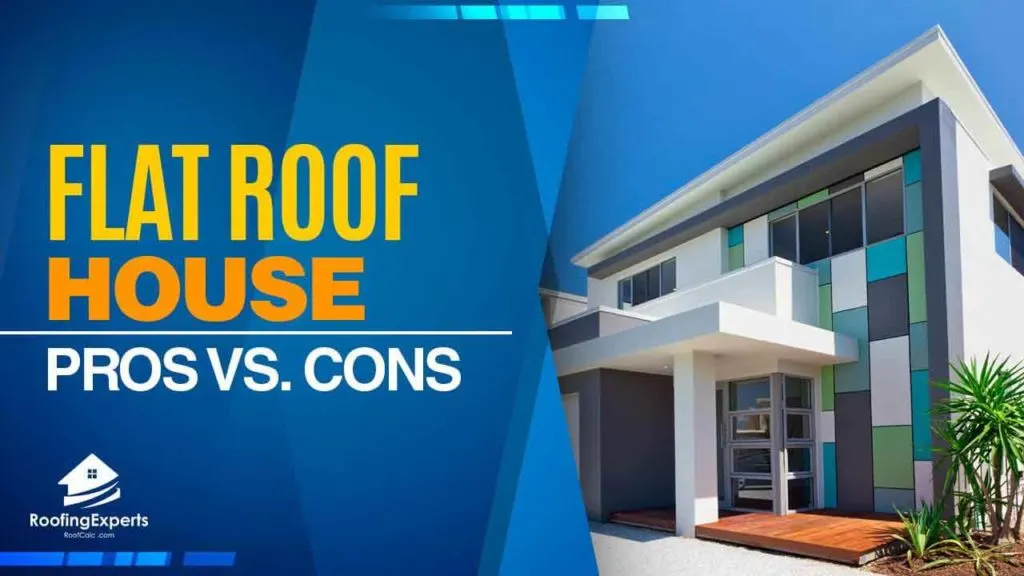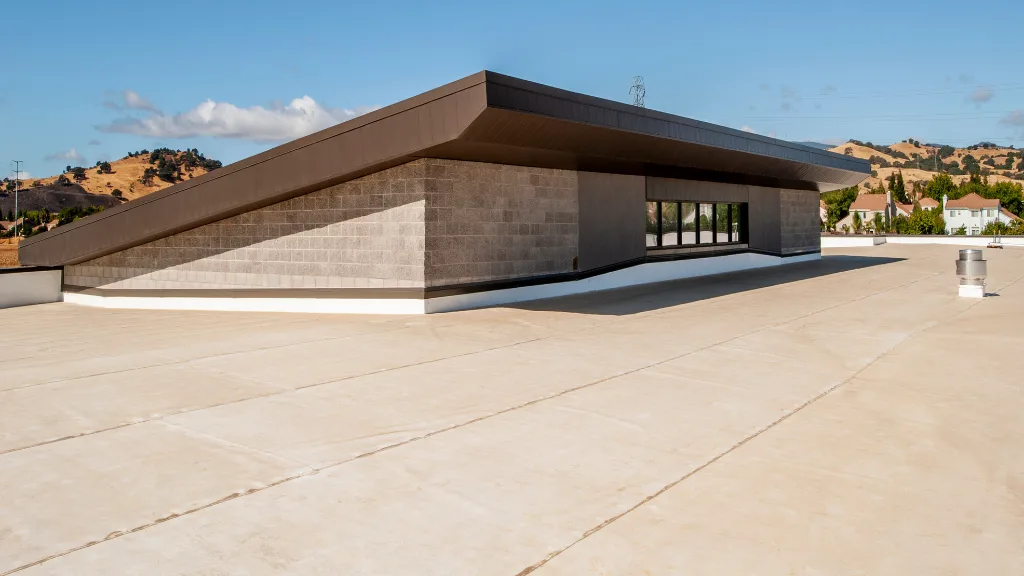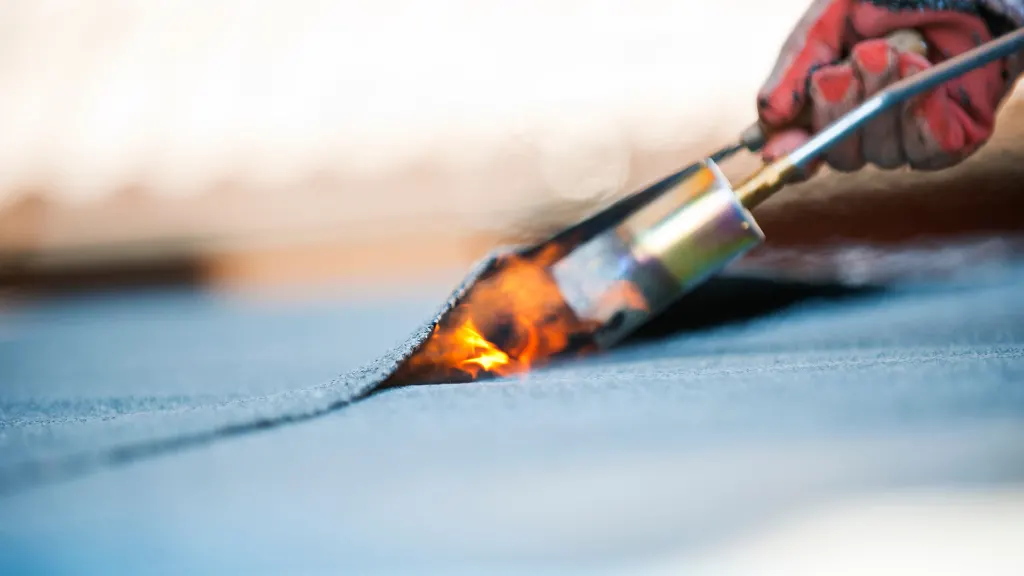A flat roof is a common type of roofing material used in residential homes. If you are in the market for a new home, it is important to consider what type of roofing material will be best. There are three main types of roofs – flat, sloped, and mansard.

It can be installed on an existing structure with minor modifications to the exterior, or it can be built into new construction. There are many benefits and drawbacks to installing a flat roof that you should know before making your decision.
This article will explore each type in detail with pros and cons of flat roof house to help you decide which is right for your situation.
Three types of flat roofs ( For a flat roof house)
A flat roof is defined as a roof that has no slope but is instead level with the ground. This type of roofing provides many advantages over conventional sloped roofs, but it also comes with some disadvantages. There are three types of flat roofs: membrane roofs, built-up roofs, and single-ply membranes. Each one can be constructed in different ways, but they all have some common features.
- Membrane roofs are the most popular type of flat roof. They are made up of a waterproof membrane that is stretched over a supportive decking. This type of roof is usually less expensive than other types, and it is easy to install. However, it is also more prone to damage, especially in cold climates. This makes it important to get professional grade membrane roofs for your home.
- Build up roofs are usually the more inexpensive option when compared with other flat roof types. They come with a higher probability of leakage, but they are very easy to repair if that does happen. These roofs are made up of three layers: a waterproof membrane, a thermal insulation layer, and a roofing membrane.
- Single ply membranes are the most expensive type of flat roof, but they also have the fewest problems. They are made up of a single sheet of polymer-based material that is stretched over the roof. This type of roof is very durable and can withstand even the most extreme weather conditions. An added benefit is that the roof is usually much stronger when compared to other types because it has a balanced water content.

The Pros and Cons of Flat roofs
A flat roof provides many advantages over sloped roofs, but there are also some disadvantages. If you are thinking about having one installed on your home, then consider all of these factors before making a final decision.
- A flat roof provides more overall space than a sloped one, which is an advantage for those who want a large home.
- It also takes less time and money to build a roof that has no slope. This makes it much easier for homeowners to change their mind about the design or layout of their homes.
- The cost to install a flat roof is also usually cheaper than installing a sloped roof.
- Flat roofs are much easier to insulate and heat in the winter, which can save you a lot of money on your energy bills.
- They are also great for homes that have pools or garages, because they provide more shade than a sloped roof.
However, there are some disadvantages to consider as well.
- A flat roof is more prone to damage than a sloped one, so it requires more maintenance.
- In cold climates, the membrane on a flat roof can become brittle and crack, leading to water leakage.
- Flat roofs also have a reduced life expectancy when compared to sloped roofs.
- A flat roof is more prone to water damage and leaks than a sloped one. The surface of the roof is also less forgiving, which means that it can be damaged more easily.
- Flat roofs are also difficult to insulate and heat in the winter months. This makes them a poor choice for homes in cold climates.
- In the summer, a flat roof can become very hot and uncomfortable. This is because there is no slope to allow for air circulation.
Tips for choosing a flat roof
- Look at the exterior design of your house and determine whether the flat roof will look appropriate on it.
- Check with your local building codes to ensure that you have proper drainage when you install a flat roof.
- Make sure that an experienced contractor is installing the roof.
- Energy efficiency: The final consideration is energy efficiency. Flat roofs are only as good as their insulation, which you will need to install in order to keep your home comfortable during the winter months. While a flat roof can trap heat if properly insulated, it can become uncomfortably hot in the summer without the proper installation. This is why most people choose a flat roof for their pool houses and garages, where they spend little time in the summer months.
How to pick the right type of flat roof for you?
Now that you know the three types of flat roofs, how do you decide which one is right for your home? Consider these factors:
- The climate where you live – If you live in a cold climate, then a membrane roof may not be the best option. A build-up roof or single ply membrane will be better suited to withstand extreme cold.
- How long you plan to stay in your home – Flat roofs are less durable than sloped ones, so if you don’t want to worry about repairs for 15 years or more then a build-up roof may be the best option.
- The size of your budget – The most expensive type of flat roof is also usually the most durable. If you have a limited budget, then consider a single ply membrane roof.
What do I need to know before installing?
In order to install a flat roof, you will need to have proper drainage in place. This means that your home must be designed specifically for a flat roof. You should also check with your local building codes to ensure that you are following all the necessary regulations.
It is important to hire an experienced contractor who has installed flat roofs before. Your contractor should also be a member of the Roofing Contractors Association, which ensures that they have experience and insurance.
You’ll also need to install the correct insulation, which may include: rigid foam, board spray foam, wool batting, mineral wool, fiberglass, cellulose, loose-fill insulation, Icynene Spray Foam.
Is it Cheaper to do it yourself? Or hire a professional?
Flat roof installation is a job that should be done by a professional. Unless you are familiar with the process and have experience installing flat roofs, it is best to leave it to the experts.
The cost of hiring a contractor will vary depending on your location and the type of roof you choose. However, it is usually cheaper, in the long run, to hire a professional than to do it yourself.

Is it worthwhile to invest?
Overall, a flat roof is a good option for those who don’t want to worry about a lot of roof maintenance. However, it is important to consider all of the pros and cons before making a final decision. Talk to a professional contractor to get advice on which type of flat roof is best for your home.

